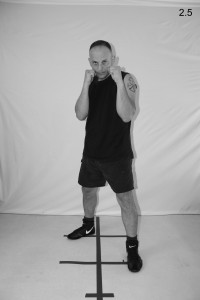Despite what you’ve seen in books, TV, and the movies, the role of law enforcement leaders is to lead.
We did away with a couple of popular tropes in previous entries – leaders as worker bees, and leaders as managers who yell at their cops. But what can you replace those clichés with? What do leaders do?
The simple answer is, they lead. They also manage some, but where people are concerned, they lead. That means to provide direction and guidance to their followers, as well as resources. The direction and guidance comes in the form of communicating a vision (where are we going and how are we going to get there?), providing direction on the course, and keeping people on task. It means taking care of their people’s needs, including the resources necessary to achieve the organizational goals. It means to inspire the follower. And it means doing all of this without forgetting that each follower is a person, an individual that deserves to be valued and respected.
In most law enforcement agencies, the vertical division of labor looks like this: service delivery, first level, mid-level, and executive leadership. Service delivery is where the public receives the service. It is usually provided by officers and/or detectives. Most of the time, first level leadership occurs at the sergeant level.
Sergeants are a crucial part of any organization. They are the men and women who lead small units (ideally 5-8, most experts say) of officers or detectives on a daily basis. These leaders are still “in the trenches” with their people, and are directly responsible for making sure they accomplish their mission. They have the equally important role of caring for their people’s needs. A good sergeant makes sure his followers have all the equipment and knowledge to take care of business. A great sergeant ministers to their professional development and personal needs as well.
A sergeant might command a single patrol team, or a group of detectives. Likewise, you might find a sergeant in charge of the entirety of a small unit. This can depend a lot on agency size. On a smaller department, the sergeant might be in charge of the burglary unit as a whole. On a larger department, she might command one of several burglary units broken up by geographical area. Essentially, whatever makes sense organizationally so that she is always in charge of one small team of officers or detectives.
The sergeant is caught between a rock and a hard place in some ways. She’s no longer a worker, and can be seen by the troops as part of the “brass” (administration). But she gets pressure from the top down as well. She has to take the needs of organization and the needs of her people, and somehow come to the right equation of balance. Standing in that gap and finding a way to pull the two concerns together takes courage and resourcefulness.
In some instances, you might see a sergeant doing some of the same work their followers do, though usually in small nibbles rather than as a main course. Remember, the sergeant is in the trenches with her people, so it wouldn’t be crazy for her to occasionally get into a car chase, foot pursuit, or an arrest situation. Not crazy, but not common, either, so use this device sparingly.
By the time someone becomes a lieutenant, he is at the mid-level of leadership. Now, instead of a small team, he commands multiple teams. For example, a lieutenant may command a shift made up of three to five patrol teams. On the investigative side of the house, the lieutenant could be in charge of several sergeants and whatever their collective group would represent – Property Crimes, for example.
Higher profile units, such as Homicide or SWAT, are somewhat of an exception. These units are more likely to have a lieutenant in charge of just a single unit. This is a holdover from the command and control model of leadership, and isn’t likely to change soon. These units have critical assignments, and the belief is that they require closer supervision.
Where a sergeant’s role is focused on her team, the lieutenant has a wider span of control. While his gaze tends to remain internal rather than external in terms of dealing with problems, challenges, and opportunities, he has to take the longer view than the sergeant. It’s his job to anticipate issues on the horizon, and to convey the organizational goals to the sergeants (who then convey it to the troops, obviously).
For me, sergeant to lieutenant was the hardest, loneliest transition I made in my career. Cops all over the country tell me the same thing. That’s because as a sergeant, you’re still in the mix with your people. You don’t do 100% police work anymore, but you sometimes do. You certainly bump into on a daily basis.
As a lieutenant in most assignments, to encounter police work, you have to get up from your desk, leave your office and seek out those actually doing it. So you can see how your distance from the line is far more profound.
Around the rank of captain (on huge agency like LAPD or NYPD, this transition happens a rank or two higher), one enters the realm of executive leadership. At this level, the leader is like the captain of a ship. She is concerned with the biggest of pictures. Systems. Internal and external problems and opportunities. What is on the horizon, and how can it affect her agency? What is the chief executive’s vision? Her values and goals? And how does she communicate that to the community and her followers both?
That said, the best leaders never forget they are leading people. They proceed with the understanding that the work doesn’t get done unless real people put in the effort. They cultivate those relationships, and most of all, they care as much about their followers’ welfare as they do the bottom line.
To put it all into perspective for those of you have made it this far:
An officer worries about answer the radio call or catching the bad guy while patrolling the city.
A detective worries about building a case against that bad guy, or finding out who he is, and getting him charged.
A sergeant worries about that officer or detective having enough time, information, and tools to catch that bad guy…and stay safe in the process.
A lieutenant worries about how many bad guys are in his area of responsibility, and strategizes on how to catch more of them sooner, while being safe.
An executive worries about the impact of crime on the community, the politics in that community, whether her people have the training and tools to reduce crime, and how they stay safe in the process.
This is an extraordinarily simplified view of things, but the important piece is that it is all about roles and perspectives. You can put the situation in your novel through these filters and ask yourself:
Who should be working this case? [hint: usually an officer or a detective]
How would someone in a particular position/rank react? What would be his main concern?
With these things in mind, hopefully you can portray police leaders in a more accurate, and more positive, light.
Or not.
It is fiction, after all. And you get to write whatever you want.
Copyright © 2015 by Frank Zafiro. All rights reserved.




